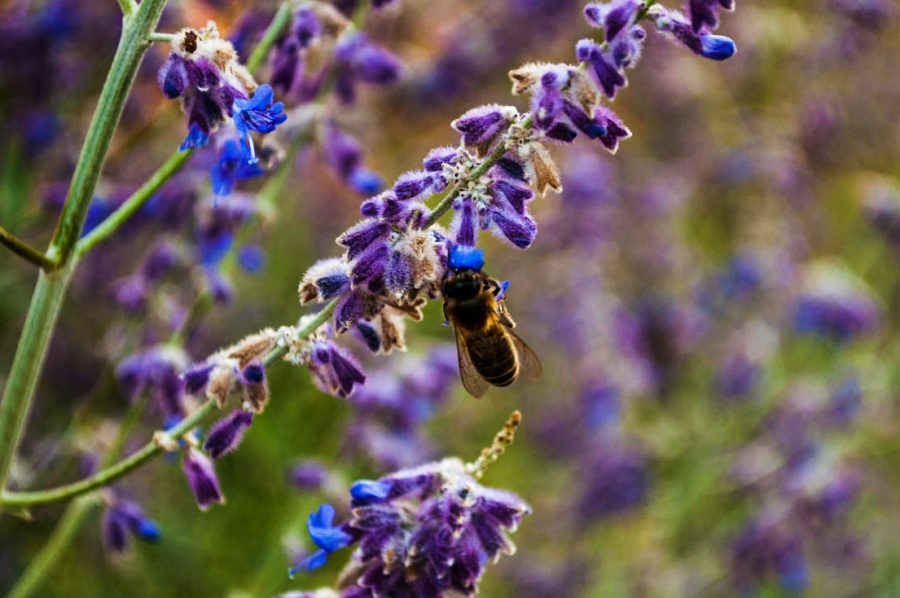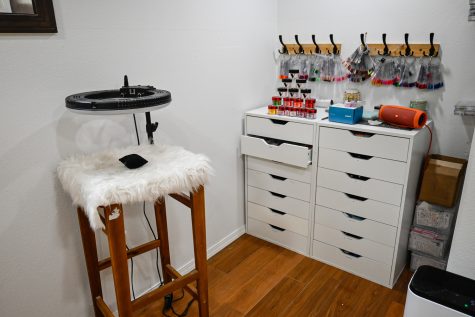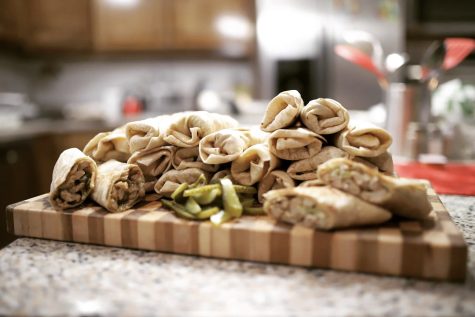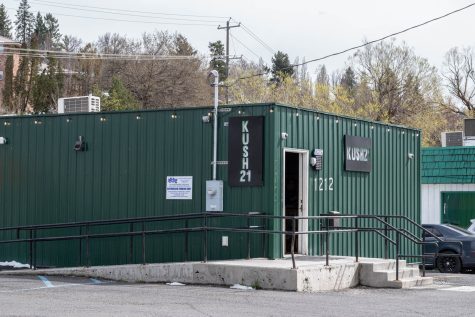WSU researchers trying to recover bee population
Researchers study how to help increase number of insects
COURTESY OF JOHANNA MATTHYNSSENS
“It has allowed us to do some things like reintroduce a subspecies called apis mellifera caucasica,” Steve Sheppard said.
September 18, 2019
Bees buzz around the air, crawl on the floor and float from person to person as a group moves between rooms, examining hives and beekeeping equipment. Every wooden board, pipe and tool are marinated in the sweet smell of honey and beeswax.
Every beehive is made by WSU researchers at the Lab Animal Resource building that a group toured Sunday early afternoon. Attendees explored bee behavior, specialized bee transport and nesting tools, and the honey extraction process.
WSU entomology professor Steve Sheppard said WSU is the only university in the country that has the facilities to properly preserve the genetic material of bees.
Researchers freeze and store bee semen to breed queens, he said. WSU also imports semen and bees from other countries for breeding to increase the genetic diversity of the bee population. Queen-producing bees are also bred for sale to other beekeepers throughout the U.S.
Nick Naeger, a WSU post-doctoral researcher from the Department of Entomology, said most of the 16,000 to 20,000 bee species are actually solitary, not social, meaning they do not live in hive colonies. Solitary bees do not produce any honey, but spend their lives pollinating plants.
“It has allowed us to do some things like reintroduce a subspecies called Apis mellifera caucasica, the Caucasian honeybee, and it’s a big, black bee that’s adapted to cold climates,” Sheppard said.
About 500 mothers produce roughly 1 million queens in the U.S. every year, he said. WSU supplies some of those queen mothers to help increase the genetic variability of the bee population.
He said the semen used to reintroduce the Caucasian honeybee was frozen for eight years before being unfrozen to instrumentally inseminate a queen.
Instrumental insemination for bees resembles the process for cattle, only much smaller and thus performed under a microscope, Sheppard said. This method is used to breed queens because they are born from fertilized eggs, whereas male bees are born from unfertilized eggs.
Sheppard said the Caucasian honeybee uses a lot of propolis, which is plant resin that is collected mainly from trees. It is sometimes referred to as a non-water-soluble “bee glue.” Bees use it to seal exposed areas of hives.
“It’s kind of a saying among beekeepers that you can tell how bad the winter is going to be by how much propolis bees bring into the hive,” Naeger said.
One primary research field of the lab is to examine possible ways for the reduction or elimination of various threats to bee populations. A notable threat is the Varroa mite, a parasite that attacks and feeds on honeybees by drilling into a bee’s exoskeleton to drain fat from it.
Sheppard said that if unmanaged, a Varroa mite infestation can destroy a bee colony in about two years.
He said bees cluster together in response to cold temperatures, which produces a side effect that may help control the threat Varroa mites pose to colonies.
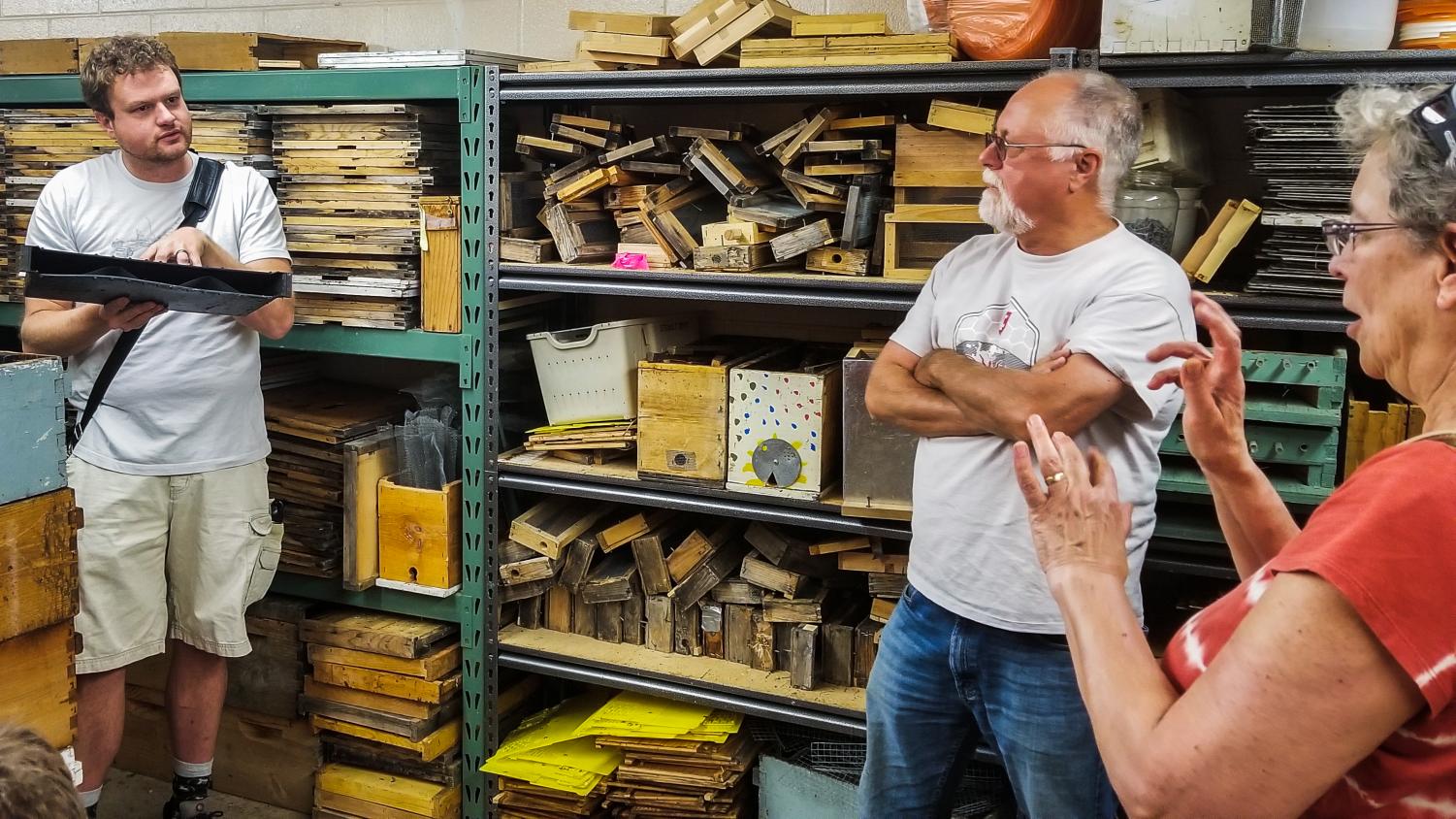
WSU post-doctoral researcher Nick Naeger shows a wooden bee frame that is inserted into a larger hive box to provide a structure for bees to build honeycomb Sunday afternoon. They also build screens to prevent mice from getting into the beehive frames.
“Have you guys see[n] the ‘March of the Penguins’ movie?” Sheppard said. “Well, the bees do the same thing but in a big cluster.”
Inside a cluster, the temperature can reach 70 degrees Fahrenheit even if it is 20 degrees outside, Sheppard said. An important result of this is that carbon dioxide levels reach about 6 or 7 percent within the bee cluster. Normal CO2 percentage in the atmosphere is around 0.04 percent.
Sheppard said Varroa mites cannot withstand the same CO2 percentages that bees can.
He said one idea to eliminate Varroa mites from colonies is to store bees in an air-controlled chamber and keep the CO2 concentration high, Sheppard said.
Naeger said that researchers make almost every wooden beehive and tool from scratch in the workshop on-site. These apparatus’ range from mice screens to keep them out of hives in the winter, to shipping containers for drones and queens.
The lab also has its own honey extractor that can collect about six hives’ worth of honey at a time, Naeger said. The honeycombs are fed through a conveyor belt into a centrifuge that flings the honey off to be piped into storage tanks.
The wax honeycombs are saved for the next season or used for candle-making the department does every holiday season, Sheppard said.
“Hey, how about a toy from the 1800s?” Sheppard said, doling comb chunks to several children who attended the tour.
Cynthia Mika, a Moscow resident and tour attendee, said she was very impressed with the amount of bee information in the tour.
“I came into it with maybe one-fiftieth of the knowledge I left with,” she said.
Mika recommends taking a tour of the facility the next time they offer one.
At the end of the tour, attendees received a jar of honey that Sheppard said was extracted from a hive two days before it was given out.
“Oh, I just loved it,” Mika said.


